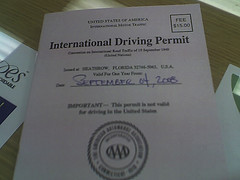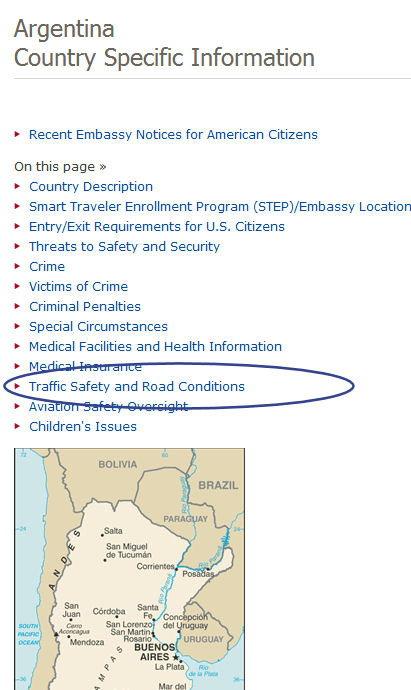Should You Get an International Driving Permit?
13 July 2012
First, a little history. Way back in 1949, the United Nations Convention on Road Traffic established the International Driving Permit, or IDP to give motorists the right to drive vehicles in foreign countries. And because language barriers typically create the most difficulties between motorists and law enforcement, the IDP is translated into as many as 10 different languages.
An IDP acts as the official translation of a U.S. driver’s license when you drive overseas.
It does not replace your existing driver’s license, however, and some major car rental companies require an IDP for international car rentals. You’ll need to check with the company you’re renting from to find out if it’s necessary.
Important notes about IDPs
The following points are important to note about obtaining an IDP:
- While IDPs are valid in over 150 countries, they may not be recognized everywhere.
- There is no driving test required to obtain an IDP (it relies on your having a valid license already).
- An IDP is valid for only one year.
- IDPs are only for visitors. If you plan to establish residency abroad, you’ll need to the steps necessary to obtain a local license.
- IDPs cannot be issued more than six months in advance of your travel.
- You’ll need to send two passport photos (sign your name on the back of each) with your application. (another great use for those extra passport photos!)
- In the U.S., we don’t require non-citizens to obtain an IDP.
Applying for an IDP
IDPs are only issued by the American Automobile Association (AAA) and the National Automobile Club. In fact, the U.S. State Department recommends against purchasing one from anyone else.
To apply for an IDP, you must:
- be at least 18 years of age
- have two passport photos
- have a valid U.S. driver’s license
The cost of an IDP from one of these providers is about $20 U.S.
Just ‘cuz you got permission doesn’t mean you know the law
Just because you have the permission to drive in a foreign country doesn’t mean you are excused from understanding the local driving laws. For example, do you know:
- Which side of the road is the correct side where you’re headed?
- Can you turn right at a red light at your destination?
- Are you allowed to answer a cell phone call while driving?
- What happens if you’ve consumed alcohol before driving?
The U.S. State Department website provides country-specific traffic safety and road condition information for individual countries, indicating what road conditions a traveler is likely to face (like whether the roads are well or poorly maintained) and the potential dangers (like landmines in Afghanistan or exhausted truckers in Brazil) of driving in each country.
See also, the State Department’s Road Safety Overseas information.
What about overseas car insurance?
If you do rent a car overseas, you should carefully check your options for car insurance. Many domestic travelers rely on their auto insurance policy at home, as well as their credit card coverage, but those may not extend to cars rented abroad. Our review of car rental collision coverage can provide the information you need as well as the plans that offer coverage.
In addition, Mexico, Ireland, and Jamaica do not accept coverage outside their own countries, so you’ll have to research and purchase a local rental coverage plan in those countries to have valid coverage.
See our tips on avoiding rental car break-ins and theft too.
Of course, if you decide against driving a vehicle overseas, see our Travel Safety Tips for Public Transportation for other useful tips.
If you’re pulled over abroad
If you get pulled over (hopefully by a legitimate officer of the law although that’s a risk in some regions of the world), you’ll need to present both your IDP and your own driver’s license. This way, the police officer will understand the reason and the contents of your native driver’s license.
Damian Tysdal is the founder of CoverTrip, and is a licensed agent for travel insurance (MA 1883287). He believes travel insurance should be easier to understand, and started the first travel insurance blog in 2006.


